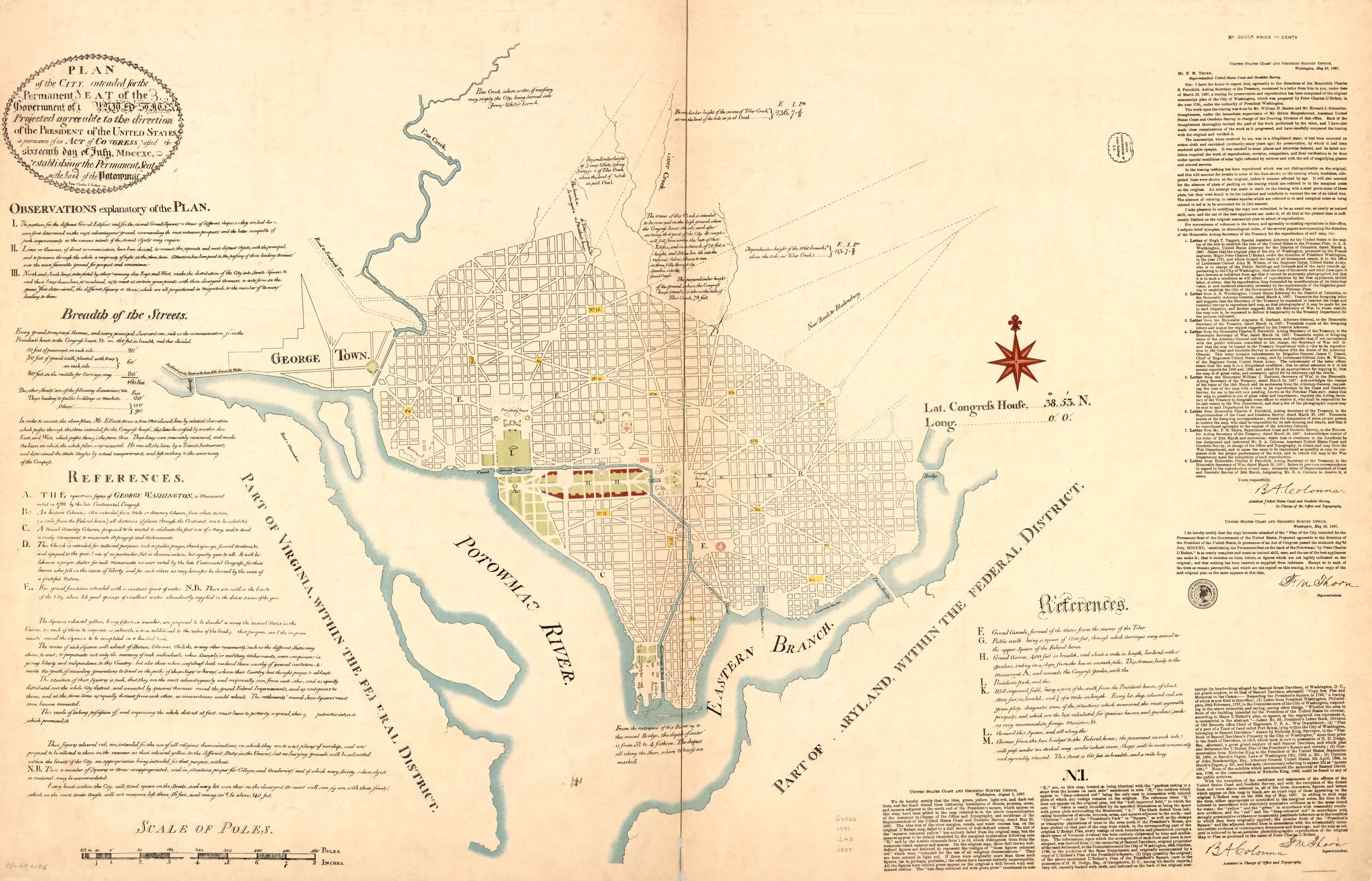
Washington, D.C., setting of two distinctly disparate 2021 events on 6 January and 20 January, was designed for public gatherings in wide open spaces. Major Pierre L’Enfant, born in France but an ardent supporter of the American Revolutionary War who volunteered to serve in the Corps of Engineering of the Continental Army, met George Washington and proposed himself as the designer of the country’s new capital. In L’Enfant’s vision, wide avenues would radiate from the house of Congress and the house of the President. L’Enfant sketched 15 open spaces for gatherings and monuments: L’Enfant stated that open spaces were as important as buildings.

L’Enfant may have been influenced by the design of a renovated Paris, France, by Georges-Eugène Haussmann, who enlarged the boulevards for two reasons: better air circulation to lessen the spread of viral disease, and large public gathering spaces. Paris still benefits from these two reasons, as does Washington.

L’Enfant ‘s grand vision was almost lost. Apparently there was a dispute, and L’Enfant fled the city with the detailed plans. Enter Benjamin Banneker. Bannekar, who had attended a one-room school while studying independently with his grandmother, was known for mathematical brilliance when he came to work with Major Andrew Ellicott as a surveyor to establish the District of Columbia’s official capital borders.

Among Banneker’s considerable talents was a photo-perfect memory. L’Enfant’s design was imprinted on the surveyor’s mind and, according to some reports, soon reproduced for completion by Benjamin Banneker.
The Smithsonian National Museum of African American History & Culture site, in Washington, D.C., is within an area now named Benjamin Banneker Park. Banneker also wrote an almanac, with an inaugural publication entitled: Benjamin Banneker’s Pennsylvania, Delaware, Maryland, and Virginia Almanack and Ephemeris, for the Year of Our Lord 1792. Banneker corresponded with Thomas Jefferson, and published abolitionist material advocating a vision in part realized, in the capital he helped design, with the inauguration of Barack Obama on 20 January 2009, and 20 January 2021, the inauguration day of President Joe Biden and Vice President Kamala Harris.
Washington, D.C., joins a small group of designed cities in history. Baghdad was created from a drawing of three concentric circles etched by sword in the sand. Abuja, Nigeria’s new capital, was influenced by Haussman’s Paris, as well as Washington, D.C., and Brasília was the first city designed to be seen from the air, and shaped like an airplane when seen from that vantage point. Capital cities are an iconic kind of urban center, embodying ideals of government and national values. In The New Science of Cities (2013), Michael Batty proposed that we see cities as systems of networks and flows. Arnold Toynbee, in Cities of Destiny, stated that cities, led with vision, may become incubators of art, culture, and science.
As Washington, D.C., takes on a new character in 2021, encouraged by inaugural address values of respect and unity, and led by President Joe Biden and Vice President Kamala Harris, how might L’Enfant’s and Banneker’s design give what Lawrence Durrell called the “spirit of place” to a new spirit of nation?
 President Joseph R. Biden, Jr. and Vice President Kamala D. Harris. inaugurated in Washington, D.C., on 20 January 2021.
President Joseph R. Biden, Jr. and Vice President Kamala D. Harris. inaugurated in Washington, D.C., on 20 January 2021.
Batty, Michael. The New Science of Cities. Cambridge: The MIT Press, 2013. ISBN: 9780262019521
Bedini, Silvio A. The Life of Benjamin Banneker. Rancho Cordova, CA: Landmark Enterprises, 1984.
Durrell, Lawrence. Spirit of Place: Letters and Essays on Travel. edited by Alan G. Thomas. Open Road: Integrated Media.
Keene, Louis. “Benjamin Banneker: The Black Tobacco Farmer Who Presidents Couldn’t Ignore.” White House Historical Association.
National Museum of African American History & Culture. “The NMAAHC Museum Site,” https://nmaahc.si.edu/nmaahc-museum-site.
Reston, Maeve. “Biden: ‘Democracy has prevailed.'” 20 January 2021. CNN.com. https://www.cnn.com/2021/01/20/politics/joe-biden-presidential-inauguration/index.html
Tan, Shelly, Youjin Shin, and Danielle Rinder. “How one of American’s ugliest days unraveled inside and outside the Capitol.” 9 January 2021. https://www.washingtonpost.com/nation/interactive/2021/capitol-insurrection-visual-timeline/
Toynbee, Arnold. editor. Cities of Destiny. London: Thames & Hudson, 1967.
Building the World Blog by Kathleen Lusk Brooke and Zoe G. Quinn is licensed under a Creative Commons Attribution-NonCommercial-NoDerivs 3.0 Unp

Very informative and provocative – thanks!
Larry